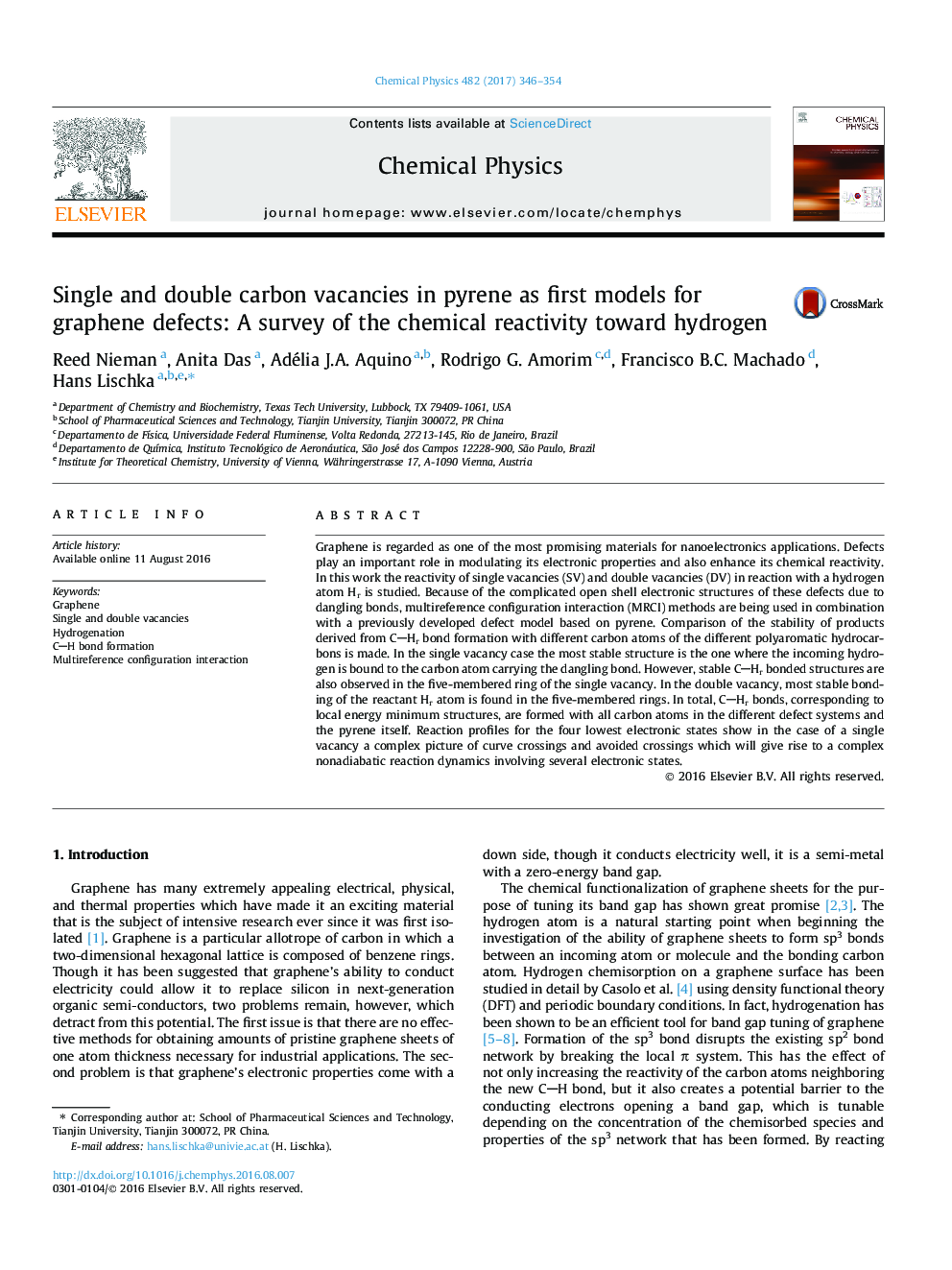| Article ID | Journal | Published Year | Pages | File Type |
|---|---|---|---|---|
| 5372810 | Chemical Physics | 2017 | 9 Pages |
Graphene is regarded as one of the most promising materials for nanoelectronics applications. Defects play an important role in modulating its electronic properties and also enhance its chemical reactivity. In this work the reactivity of single vacancies (SV) and double vacancies (DV) in reaction with a hydrogen atom Hr is studied. Because of the complicated open shell electronic structures of these defects due to dangling bonds, multireference configuration interaction (MRCI) methods are being used in combination with a previously developed defect model based on pyrene. Comparison of the stability of products derived from CHr bond formation with different carbon atoms of the different polyaromatic hydrocarbons is made. In the single vacancy case the most stable structure is the one where the incoming hydrogen is bound to the carbon atom carrying the dangling bond. However, stable CHr bonded structures are also observed in the five-membered ring of the single vacancy. In the double vacancy, most stable bonding of the reactant Hr atom is found in the five-membered rings. In total, CHr bonds, corresponding to local energy minimum structures, are formed with all carbon atoms in the different defect systems and the pyrene itself. Reaction profiles for the four lowest electronic states show in the case of a single vacancy a complex picture of curve crossings and avoided crossings which will give rise to a complex nonadiabatic reaction dynamics involving several electronic states.
